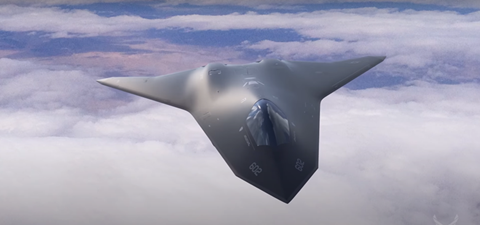The 2024 defence spending plan approved by Congress on 14 December could expose new details regarding US plans for next-generation aircraft.
Language included in the 2024 National Defense Authorization Act (NDAA) will require the Pentagon to report plans for the development and fielding of advanced platforms including sixth-generation fighters and autonomous support jets.
Both the US Air Force (USAF) and US Navy (USN) are named in the directives.
The air force’s Next-Generation Air Dominance (NGAD) programme, navy F/A-XX crewed fighter programme, and the multi-service Collaborative Combat Aircraft (CCA) effort to develop autonomous fighter jets were all identified by lawmakers for additional oversight requirements in the NDAA.

For both NGAD and F/A-XX, as well as the accompanying CCA development efforts, the navy and air force must submit detailed reports outlining the programme goals, key technical milestones and testing events.
Congress also mandated the two services provide detailed cost estimates for the first two phases of development: engineering and manufacturing design, and low-rate initial production.
Specifically, the USAF and USN will have to provide cost estimates for recurring flyaway cost, average procurement unit cost, gross unit cost, aircraft cost-per-tail-per-year and aircraft cost-per-flight-hour for the two sixth-generation fighter programmes, as well as CCAs.
The first reports are due within 180 days of the legislation’s passage, meaning the unclassified details should be publicly available by June 2024.
The pre-emptive oversight requirements appear to indicate some scepticism on the part of lawmakers that the Pentagon is appropriately launching its major pivot toward uncrewed systems, of which CCAs are expected to be central.
While the spending plan notes that Congress agrees CCAs “have the potential to significantly increase the lethality of existing tactical fighter aircraft”, legislators are apparently unsatisfied with the Pentagon’s analysis of the concept.
“Neither the secretary of the air force nor the secretary of the navy has sufficiently explained to the congressional defence committees how the departments can acquire the vehicles affordably [and] in sufficient numbers to execute the concept of operations,” lawmakers from both the House of Representatives and Senate said in written comments.
The Pentagon has said it hopes to field thousands of low-cost, autonomous systems within just a few years.


























